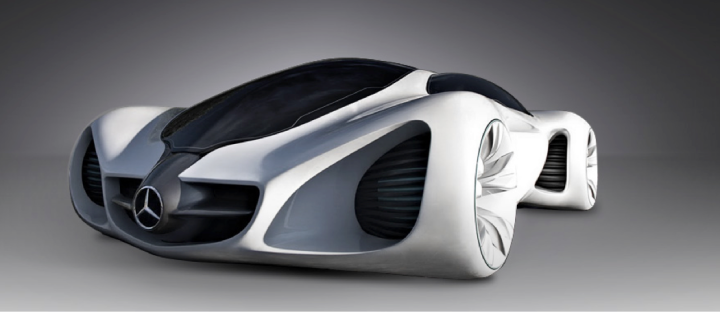Tesla Panoramic Windshield
Videos surface from Model X owners showing what the Model X panoramic windshield really looks like from a first person perspective. The large windshield provides an amazing overhead view however the small visor that snaps out from the pillar might pose as a challenge for blocking out direct sunlight.
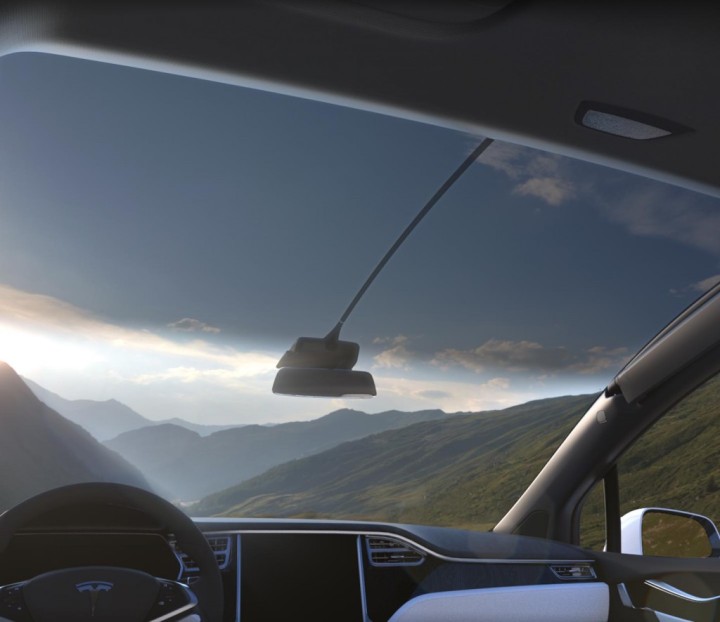
Tesla has created quite possibly the largest all glass panoramic windshield in the world with the new Model X, giving driver and passengers an unparalleled viewing experience. Imagine driving with a completely unobstructed view of the road that continues all the way into the skies above.
Part windshield and part moonroof, the 31 square feet (2.9 square meters) of glass provides an unbelievable view and makes for a helicopter cockpit-like riding experience according to Tesla CEO Elon Musk.
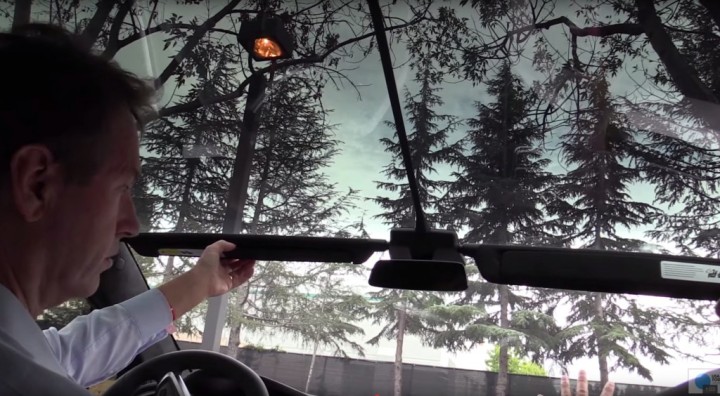
The Model X panoramic windshield uses solar tinting technology that allows it to darken depending on the intensity of sunlight. However, it’s still a big unknown on whether the abundance of sunshine entering into the Model X will affect cabin temperature, and pose as a nuisance for driver’s that may feel blinded by unobstructed sunlight.
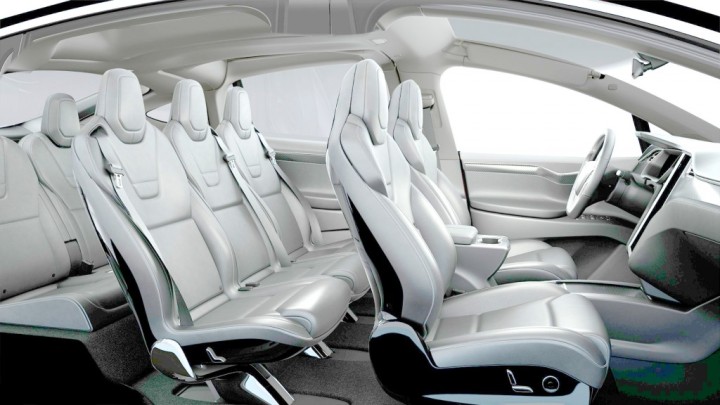
Automotive Glass: Design Trends

Since the early 1900’s windshields were developed in part to protect the driver against the elements. Designed as a bi-fold to allow the driver to tip the top half down for an unobstructed view. Sidelites with curvature began to appear in the early 1960’s, which meant more attention to styling, design flexibility, and a greater degree of packaging constraints.
Designers have always seen glazing as a crucial element in designs and that differentiates vehicles in the marketplace. In the recent years we see a marked increase in the amount of glazing in a car, in order to emphasize visibility and an “open cabin experience”.
There are two prominent design trends advocating these features where the front & rear windshield extends up into the roof with sunroofs morphed in and a Panoramic (front & rear windshields wrap into the sides to include ‘A’ and ‘C’ pillars).
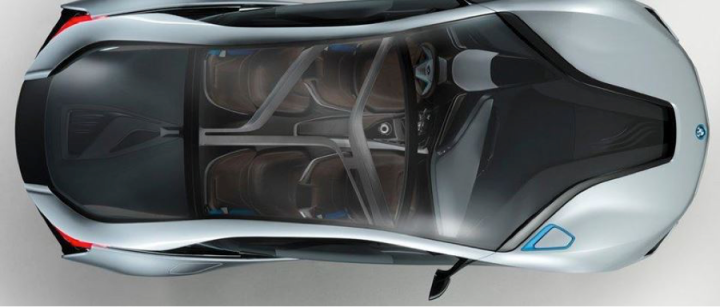
Value added glazing solutions have been developed to minimize such target areas as, heat load in vehicle cockpit and offer thermal comfort all year around, to reduce vehicle weight through the use of lightweight glazing, (with conventional glass design, this will provide it’s own set of unique challenges) to provide maximum visibility for optimum driving conditions, to integrate new features that enhance the driving experience and to safeguard the vehicle occupants in case of accident. The windshield is critical in passing FMVSS 208 roof crush test, so it’s design and integration is essential to a quality and saleable vehicle.
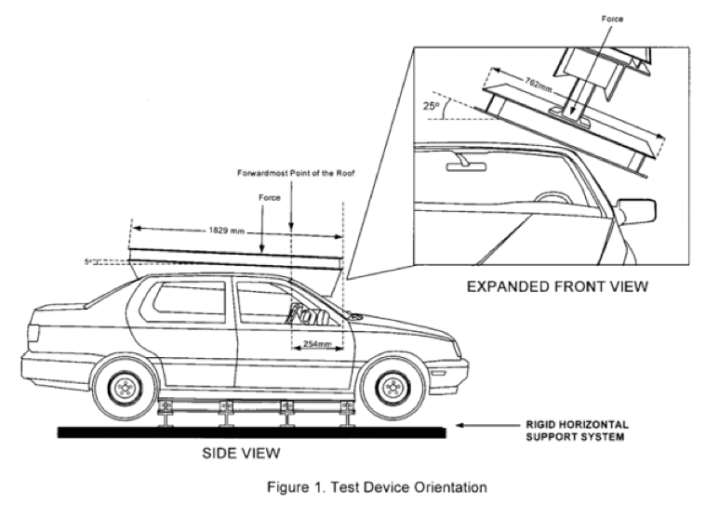
Current Technologies
Smart Glass is a name for glass that has been made “smart” by value adding materials either by coating or laminating or by embedding electronics and sensors. Smart glass can provide a variety of capabilities for auto glass—self-tinting glazing, self-cleaning glazing, and enhanced in-car information and entertainment systems. Smart glass technologies include electrochromic, photochromic, thermochromic, suspended particle, micro-blind and polymer dispersed liquid crystal devices. SPD-SmartGlass (suspended particle devices) is a well-known self-tinting technology, in which a matrix polymer film filled with crystalline particles encased in a carrier fluid is sandwiched between sheets of glass, allowing the glass to be changed from clear to dark with the push of a button.
Suspended particle devices (SPDs)
In suspended particle devices (SPDs), a thin film laminate of rod-like nano-scale particles is suspended in a liquid and placed between two pieces of glass or plastic, or attached to one layer. When no voltage is applied, the suspended particles are randomly organized, thus blocking and absorbing light. When voltage is applied, the suspended particles align and let light pass. Varying the voltage of the film varies the orientation of the suspended particles, thereby regulating the tint of the glazing and the amount of light transmitted.
Tint Chart
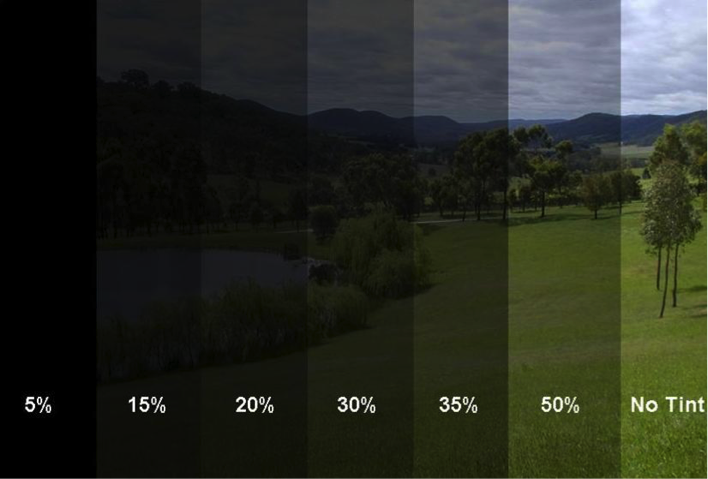
The technology provides over 99% UV blockage and instant switching in 1 to 3 seconds. In cars, the range of light transmission for the technology is 50-60 times darker than a typical sunroof to twice as clear as an ordinary sunroof.
Published data by Mercedes-Benz shows that SPD technology can reduce cabin temperatures inside a vehicle by 18 °F (10 °C). Other advantages include reduction of carbon emissions and the elimination of a need for expensive window add-ons.
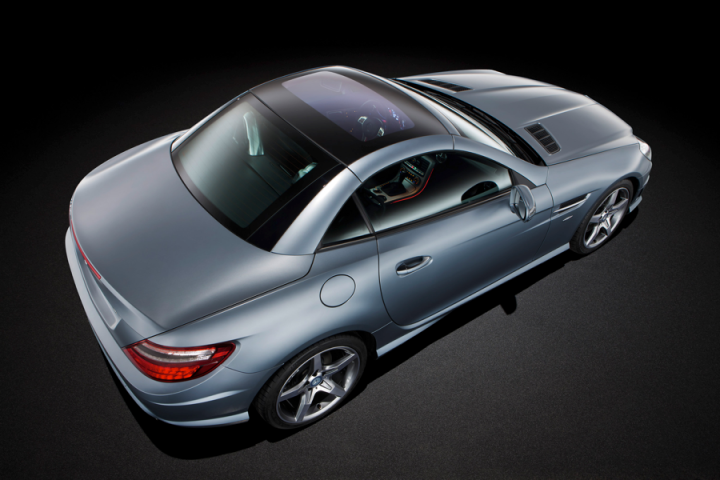
One recent example of SPD’s successful application is in the 2012 Mercedes Benz SLK, which offers a panoramic roof switching to light or dark at the touch of a button. While UV and infrared light are effectively blocked in transparent mode, thermal insulation has been found to increase significantly in darkened mode, by dropping the temperature on interior parts by 80%: thereby taking the strain off the air-conditioning system, and leading to reduced CO2 emissions.
In Pininfarina’s design concept for ‘Hidra’ (a multipurpose coupe) uses an integrated windshield that heads off impending rainfall and tree twigs is a nanotechnology-based 4-layered windshield designed to repel water and dirt without wiper blades.

The number one layer of this futuristic windshield contains titanium oxide, which is designed to rapidly repel water, while the second layer directs dirt and debris off to the windshield’s sides. Although the windshield’s third layer is a sensor that calculates the amount of water or dirt that needs to be disposed, the control center of the whole operation is the fourth layer. The final layer acts as a current conductor, charging the unit with electricity to run the entire self-cleaning process.
Automotive
Commercialization of SPD is accelerating in the automotive industry SPD automotive side (mainly aft of the B/Plr) and rear windows and sunroofs offer many benefits to passengers in the vehicle. Because of their fast-switching and infinite tunability, they reduce unwanted light and glare, which allows users to more comfortably maintain their views of the outside and to enjoy glare-free viewing of displays and video screens. SPD automotive glass also minimizes heat build-up inside the vehicle because of their ability to block solar heat gain. They automatically switch to their maximum heat-blocking state when the vehicle is not in use. These features improve a vehicle’s fuel efficiency and reduce carbon emissions. The deep tinting of SPD windows also gives users instant privacy on demand. This may be a hot item for recreation vehicle users.
There are approximately 365 worldwide patents and patent applications covering SPD technology. While this type of glass is effective and has several advantages, one disadvantage is that electricity is required to keep the window transparent.
Gorilla Glass by Corning works great for smartphones, but what if you replaced all of car’s windows with this resilient stuff?
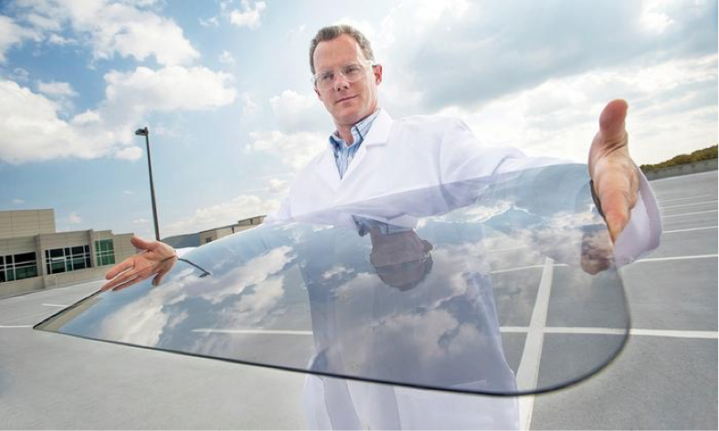
Gorilla Glass is thin – from .5 mm to 2 mm – and therefore lightweight. But it’s also tougher and damage resistant. Its composition allows a deeper layer of chemical strengthening that is better able to resist the deep scratches that cause glass to break. Using Gorilla Glass in a car cuts down on the weight of the vehicle resulting in re-distribution of the weight reduction in a way that would slightly alter the car’s center of gravity. Together, that would help cars with the new window glass gain a few extra miles out of each gallon of fuel. Recently, BMW announced it would be using Gorilla Glass for the backlites of their i8 sports car for sound-dampening purposes, as the glass will consist of two 0.7mm layers with an acoustic sheet in the middle. Ford recently announced it would be using Corning’s Gorilla glass on the new GT. Corning is partnering with Saint Gobain to produce. Claiming the new Gorilla Glass hybrid window laminate is approximately 25 % to 50 % thinner, and equals, or exceeds the strength of traditional laminate. Standard laminate glass ranges from four millimeters to six millimeters in thickness, where Gorilla Glass hybrid window ranges from three millimeters to four millimeters. This remarkable reduction in thickness greatly reduces the weight of each panel. Plus, the glass is more robust due to advanced processes for contaminant reduction, chemical strengthening, and unique edge treatment and laminate construction.

Polycarbonates
One of the key plastics used in automotive sector is polycarbonate (PC). PC has dominated the market for vehicle headlamp covers for 15 years, and now it challenges glass in windows. The primary advantages of PC automotive glazing are 50% weight reduction (and associated CO2 emissions reductions) along with greater styling freedom and simpler functional integration. The main objection to widespread use of PCs is cost, which can run as high as 4:1.
European regulation currently permits polycarbonate (PC) use in all automotive glazing applications except the windshield. In the United States, the US Department of Transportation’s National Highway Traffic Safety Administration (NHTSA) has approved the use of PC for all non-windshield glazing applications provided that it meets all existing auto glazing specifications for laminated glass as prescribed in the Federal Motor Vehicle Safety Standard (FMVSS) No.205. However, uncertainty over long-term weathering and compliance with the ANSI regulation has held back adoption of PC glazing in the US.
The wide choice of styling options with PC is testing conventional assumptions of automotive window design and creating whole new opportunities for advanced vehicle styling. Features such as colored glazing are now possible along with gaps in the window, sharp corners, smooth corner radii or complex 3D shapes. These features are undesirable, unmoldable or cost-prohibitive with laminated or tempered glass. PC auto glazing permits parts integration previously not possible. It is possible to create a roof-module frame and optical panel in one piece. Molding heating/defrosting elements and fractal antennas into a PC window panel is also possible using in-mold films with preprinted circuitry.
Two principal PC suppliers and window-glazing proponents, Bayer and Sabic Innovative Plastics, continue to make steady advances with resin and plasma coated polycarbonates. OEMs like GM, Ford, Volkswagen,
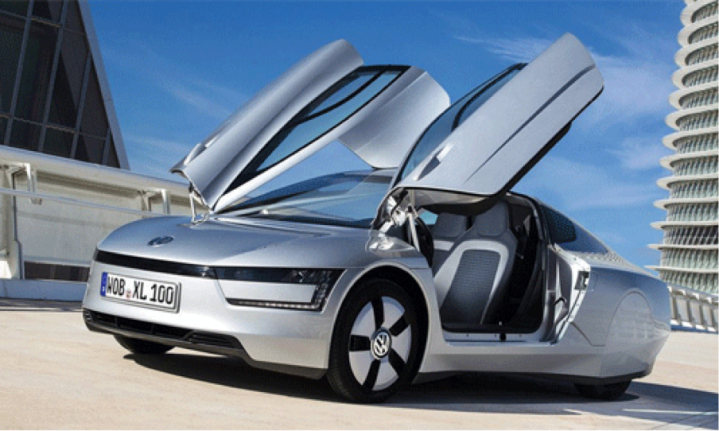
BMW and Fiat have already started using these products for window and rear-glazing applications in passenger cars.
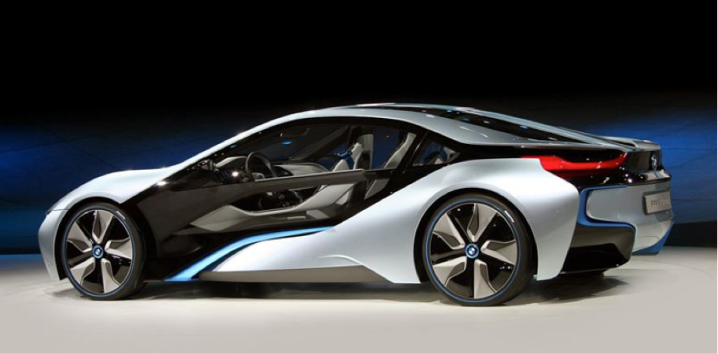
Future Technology Concepts
By 2020, the windshield will display not only key information about speed, fuel and any issues with parts of the car. It will also combine visual sensors with augmented reality, online maps and GPS technology to provide drivers with live, visual information about the places and hazards around them.

Essentially the car is becoming more like a laptop and the windscreen will evolve into the virtual information screen. Both glass and augmented reality technology are nearing a point where the windscreen can work harder to improve road safety, awareness and driving in general. Of course with all of this information comes the increased potential for distracted driving.
An interesting future development is one that generates enough energy to power the car’s multimedia electronics and three fans in the interior. When the car stands in the sun, the photovoltaic system powers the fans to keep the inside of the car cool. Because of their product features, dye solar cells have a major role to play in achieving regenerative, climate-neutral, safe and affordable energy for our future. Dye solar cells are proven to be extremely efficient even in cloudy conditions. The transparent dyes are stimulated by light and are very effective generators of electricity even in cloudy conditions. Hence, organic photovoltaics may actively help to improve the future performance of electric cars as an additional, sustainable source of energy. Transparent solar cells can also be manufactured in a virtually unlimited range of colors and act as a signature design element.
Got backseat boredom? General Motors and Toyota are working on a new concept in rear seat entertainment technology that uses the windows as interactive touchscreens – to help rear seat passengers (particularly children) have a richer experience on the road. General Motor’s Windows of Opportunity (WOO) Project and Toyota’s Windows to the World project were inspired by psychological studies indicating car passengers often feel disconnected from their environment, and are working to provide a technology interface designed specifically for rear seat passengers with interactive displays capable of stimulating awareness, nurturing curiosity and encouraging a stronger connection with the world outside the vehicle – with advanced windows that are capable of responding to vehicle speed and location that augment real world views with interactive enhancements to provide entertainment and educational value.

Dynamic & Intuitive Control Experience (DICE) is “capable of recognizing and using a driver’s hand movements to create a custom virtual instrument panel—complete with live feed from their social network…” The display gives drivers the ability to pull up data pertaining to places of interest by simply pointing at them.
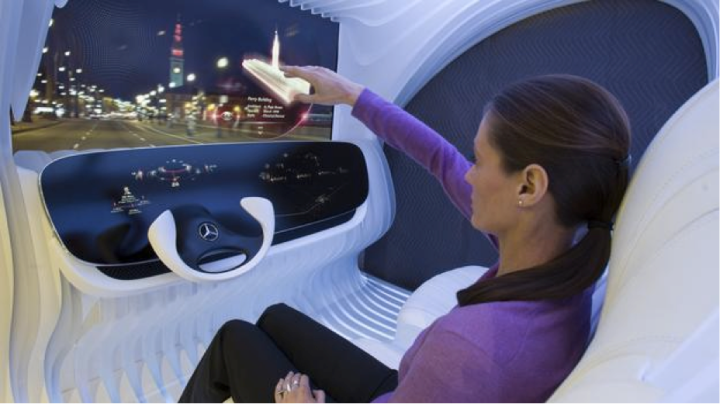
Another example of developmental AR is the enhanced vision systems from General Motors and Land Rover, which surveys the car’s surrounding landscape environment while simultaneously monitoring the driver’s eyes and head movements. The collected data is then processed onto the windshield to rely important information to the driver such as upcoming traffic, an animal near the side of the road or the identification of a building. This GM concept also has the capability of measuring distance from the car to the edge of the road when fog interferes with a driver’s view, a company report states.
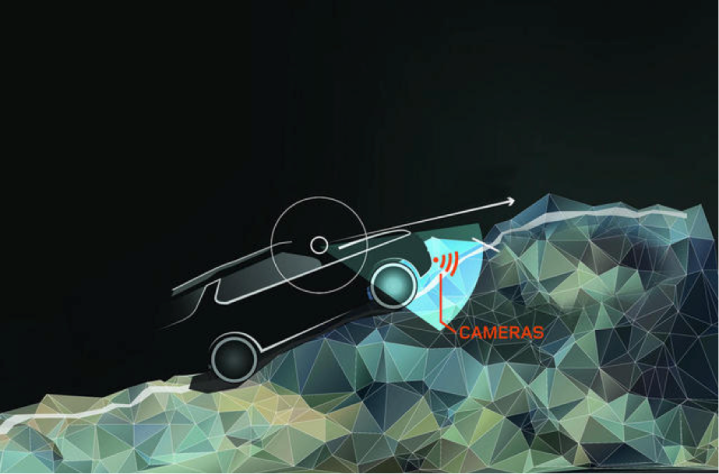
However, the most extreme concepts being worked on are technologies that will make the hood or rear seat of a car appear transparent, so that the drivers can see everything around them. These setups use cameras mounted outside the car to project an image inside the car in the driver’s field of view. Using similar technology to a heads-up display, the image is shown on a reflective screen mounted behind and between the two front seats. When a driver looks back over his shoulder, he sees the “real” image out of the rear view window continued, through augmented reality, right down the seats to the floor.
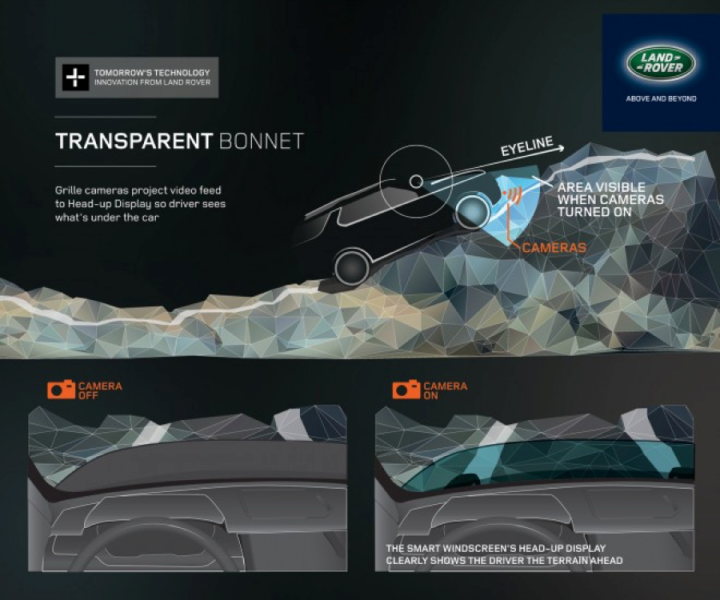
The Incoming Wave of Innovation: Embedded Interconnected Microsystems
The need to embed rapidly evolving information, communication, entertainment and environmental devices is already straining the existing paradigm of driver safety and comfort requirements. These additions to the all ready taxed electrical systems in vehicles are becoming problematic in design. The rapid expansion of in-vehicle functionality will be further compounded by innovations in intelligent vehicle glazing that would need to respond to gesture, voice and finally thought-commands through an intricate network of Microelectromechanical systems.
Conclusion
There is one thing that prohibit the current from being the future technology in automotive glazing, and that is the ability to bring the product to the main stream, high volume passenger car market at a reasonable cost to your customer.
